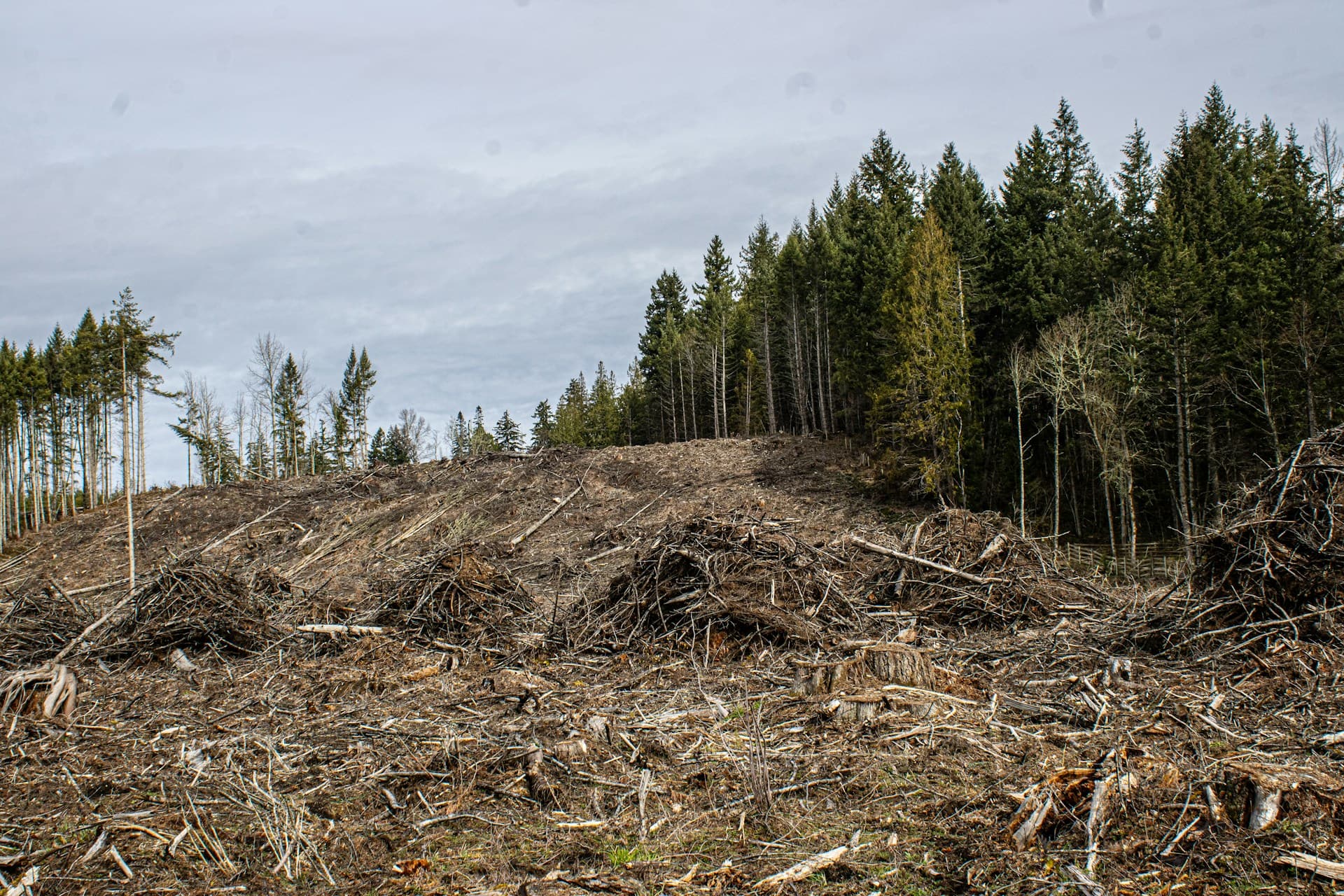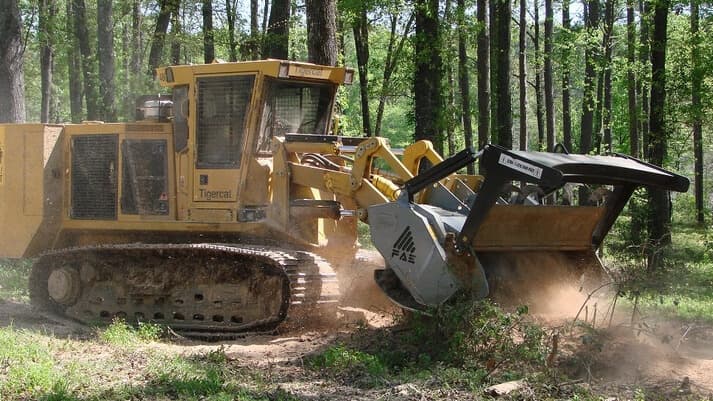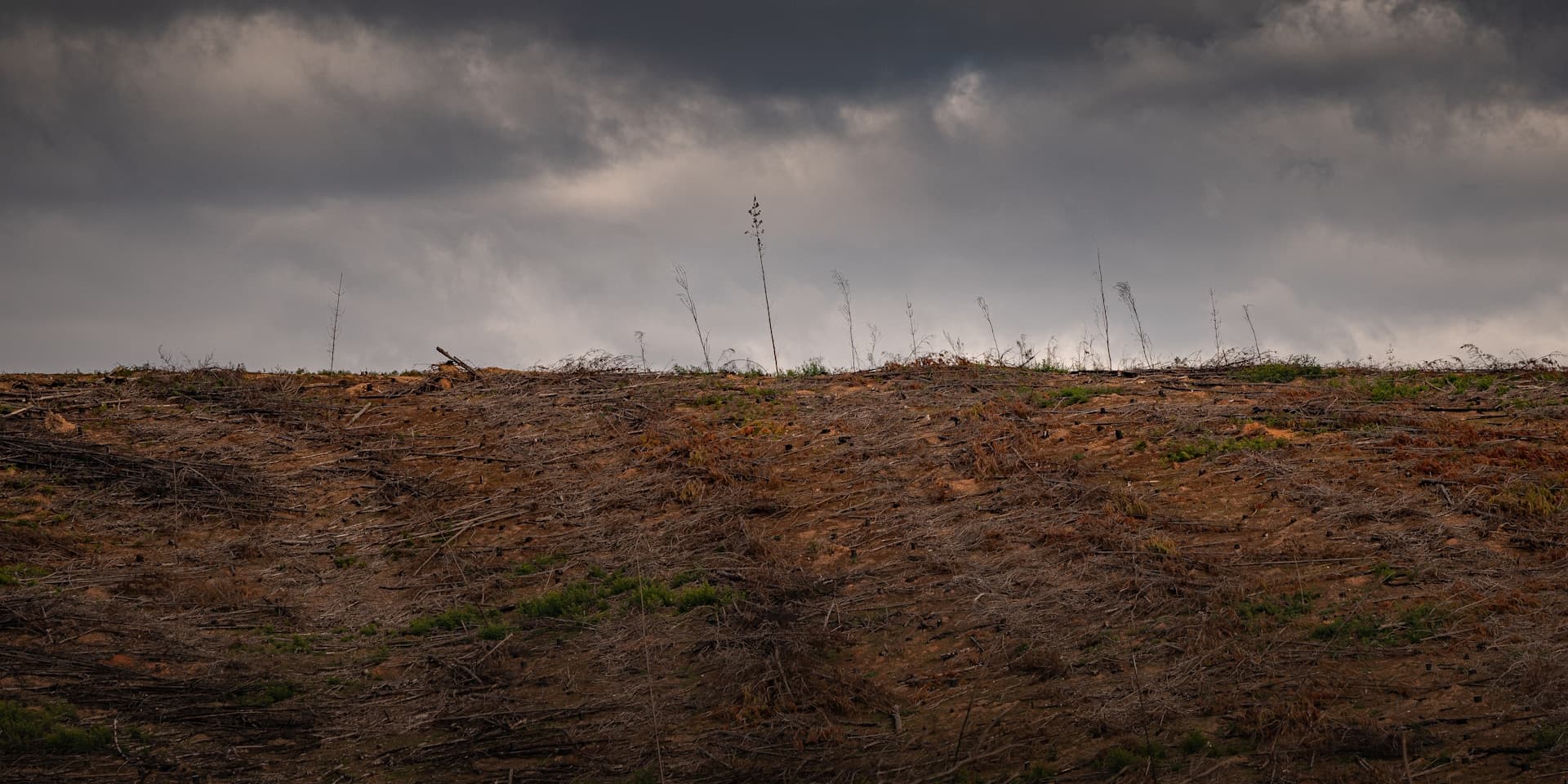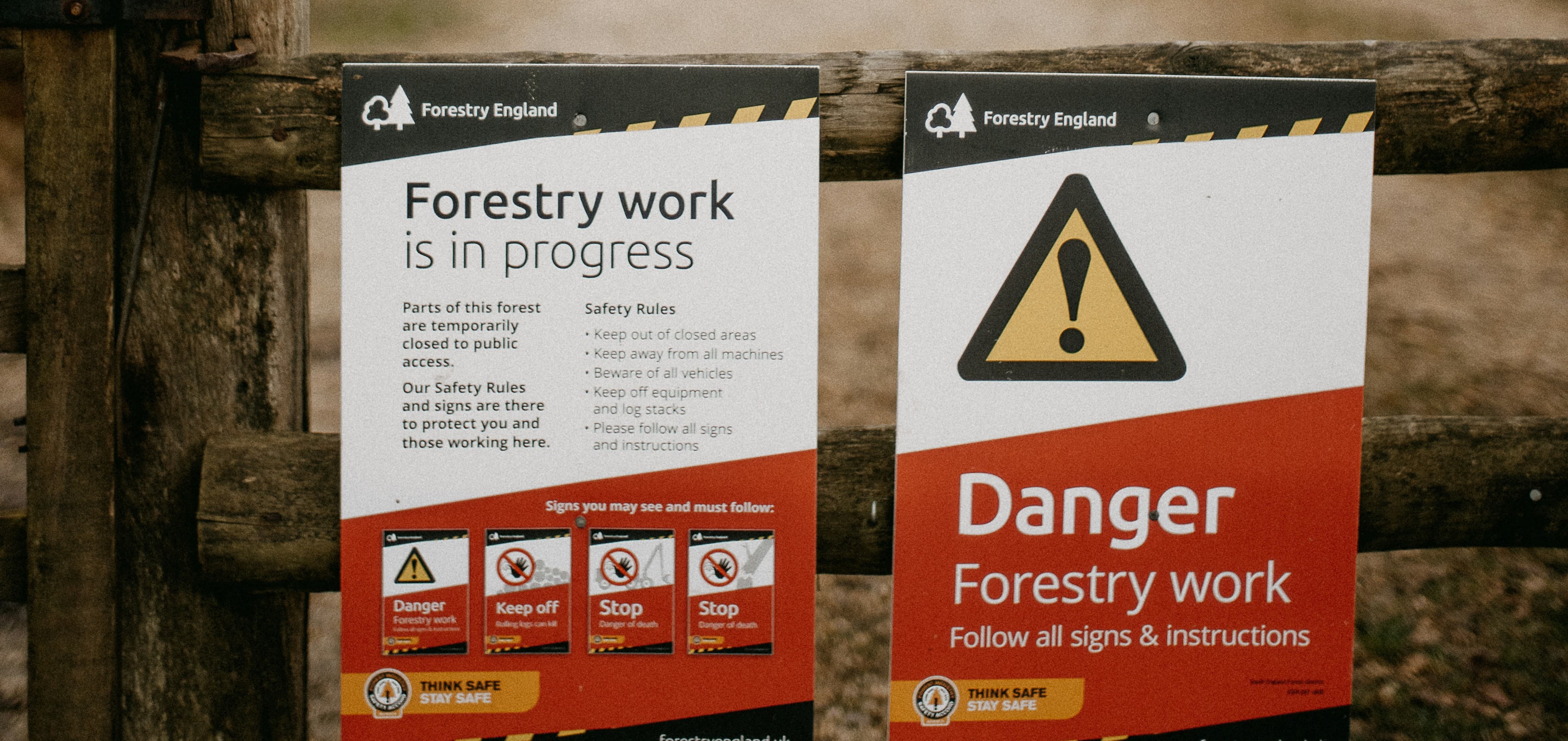Clearing overgrown land isn’t always as simple as it sounds, especially when the area is tangled with dense brush, small trees, or fast-spreading invasive plants. That’s where forestry mulching comes in. This method uses a single machine to cut, grind, and mulch unwanted vegetation right where it stands, without the need for hauling debris, burning, or coordinating multiple pieces of equipment.
Increasingly, landowners, contractors, and environmental teams are turning to forestry mulching as a practical and sustainable approach to managing wild or unmanaged land. In this article, we’ll take a closer look at what forestry mulching is, how the process works, and the types of equipment involved, as well as its key benefits and what you can expect in terms of cost.

(Image Source: unsplash.com)
What Is Forestry Mulching?
The term “mulch” refers to organic material, such as shredded branches, leaves, and bark, used to cover the soil surface. It helps retain moisture, suppress weed growth, and improve soil quality. Forestry mulching is a land clearing technique that involves cutting, grinding, and shredding unwanted vegetation in wooded or overgrown areas. Instead of hauling debris away or burning it, the material is left on the ground as mulch, creating a protective layer that naturally breaks down over time.
Unlike traditional clearing techniques that can disturb the soil or require multiple pieces of equipment, forestry mulching is more efficient and less invasive. It helps preserve topsoil, minimizes erosion, and often completes the job faster with fewer resources. In many cases, all tasks can be completed efficiently with a single forestry mulching machine.
Forestry Mulching Equipment
The core machine used in forestry mulching is known as a forestry mulcher or mulching head. These attachments can be mounted on various carriers like skid steers, excavators, or tractors, depending on the size and terrain of the project.

(Image Source: pinterest.com)
Forestry mulchers generally fall into three categories based on how they cut and process material:
1. Deck Mulchers
Deck mulchers use fast-rotating blades to slice through brush and small trees. They’re best suited for lighter vegetation and are often chosen for their speed. However, they may struggle with larger material and tend to leave a medium-grade mulch finish.
2. Disc Mulchers
Built with a spinning disc and fixed teeth, these mulchers are designed to handle thicker trees with efficiency. They can fell standing trees quickly and are great for fast-paced clearing, though the resulting mulch is usually rougher in texture.
3. Drum Mulchers
Drum mulchers use a cylindrical drum lined with heavy-duty teeth to process a wide range of vegetation. While not always the fastest option, they produce a finer, more even mulch and offer greater precision, ideal for projects where ground appearance matters.
Choosing the right type of mulcher depends not just on the vegetation, but also on the equipment you’re using and the layout of the land. For instance, skid-steer-mounted units are maneuverable and great for tight areas, while excavator-mounted options offer reach and power on uneven or large terrain.
How Does Forestry Mulching Work?
The forestry mulching process itself is straightforward. Once powered on, the mulcher’s cutting tool—whether disc or drum—spins at high speed. As the machine moves forward, it grinds down the vegetation, turning it into mulch and spreading it across the ground in one step.
This method allows for targeted clearing without disturbing the surrounding soil. Even on challenging terrain—such as slopes, rocky areas, or dense woodlands—forestry mulching can often be adapted using the right carrier machine and attachments.
Key Benefits of Forestry Mulching
Forestry mulching offers a range of practical and environmental advantages, making it a preferred option for landowners, contractors, and conservation teams alike:

(Image Source: unsplash.com)
-
Cost-Effective Operation
Since there’s no need for hauling, burning, or follow-up cleanup, forestry mulching saves on fuel, labor, and disposal costs. A single machine can usually handle the job from start to finish.
-
No Permits Required in Most Areas
Unlike burning or large-scale excavation, forestry mulching generally doesn’t require special permits or regulatory approval in most regions, saving time and paperwork.
-
Adaptable to Most Terrain and Weather
From rocky slopes to wet fields, mulchers can operate under conditions that would slow down traditional clearing methods.
-
Efficient and Time-Saving
By clearing and mulching in one pass, forestry mulching cuts down on total work hours and minimizes the need for additional equipment or labor.
-
Low Environmental Impact
There’s no smoke, no runoff, and no waste left behind. This makes it a sustainable choice for environmentally sensitive areas.
-
Improved Soil Conditions
As mulch decomposes, it adds nutrients back into the soil and helps regulate moisture, promoting healthier regrowth over time.
-
Reduced Erosion Risk
Because the mulch stays in place and the soil remains mostly undisturbed, the ground is less vulnerable to erosion from wind or water.
-
Supports Wildlife and Habitat Conservation
Rather than clearing everything indiscriminately, forestry mulching can be done selectively to protect native plants and animal habitats.
-
Helps Prevent Wildfires
By removing dry brush, deadwood, and other flammable materials, forestry mulching lowers the fuel load and reduces fire risk.
-
Natural Weed Suppression
The mulch layer acts like a barrier, making it harder for invasive species to take hold again.
-
Pest Control
Clearing dense underbrush reduces hiding spots for ticks and other pests, improving land safety for humans and animals alike.
Forestry Mulching Costs
Forestry mulching costs can vary widely depending on how the service is billed, by the hour, day, or acre:
- Hourly: Typically $150 to $400
- Daily: Often between $1,500 and $3,000
- Per Acre: Anywhere from $400 to $7,000, depending on conditions
Several key factors influence the final price:
-
Vegetation Type and Density
Thicker brush, large saplings, or invasive species take more time and energy to clear.
-
Terrain and Topography
Rugged or steep ground increases fuel use and slows progress, raising the overall cost.
-
Project Complexity
Selective clearing or working around existing structures may require more precision and higher operator skill.
-
Site Accessibility
Remote locations, narrow access points, or wet soil conditions may require extra equipment or prep time.
-
Land Size
Larger jobs may qualify for per-acre pricing, though setup and mobilization costs still apply.
-
Time of Year
Seasons impact both vegetation density and soil condition, factors that can affect efficiency and scheduling.
Disadvantages of Forestry Mulching
While forestry mulching is a highly effective method in many cases, it does have some limitations to keep in mind:
-
Not Ideal for Large Trees
Most mulchers are built to handle material up to 6–8 inches in diameter. Larger trees usually require cutting down with other equipment first.
-
Roots Are Left in Place
Forestry mulching grinds vegetation at or just below ground level, but it doesn’t remove root systems. If root removal is needed—for example, before construction—another method may be required.
-
Poor Fit for Rocky Terrain
Rocks can damage the cutting components and pose safety risks. For rocky sites, mulching may not be the most efficient option.
-
Limited Reach in Difficult Areas
Steep slopes, soft ground, or areas without proper access may restrict where machines can operate.
-
Operational Safety Concerns
Mulching equipment must be handled carefully to avoid injury or equipment damage. For non-professionals, hiring an experienced operator is strongly recommended.

(Image Source: unsplash.com)
Is Forestry Mulching Right for Your Project?
Forestry mulching is an effective and environmentally responsible land clearing method, but it’s not always the right fit for every project. Whether it meets your requirements depends on your site conditions, project goals, and budget considerations.
Forestry mulching may be a good option if:
- You need to clear brush, small trees, or overgrown vegetation up to 6–8 inches in diameter.
- Soil preservation and minimal disturbance are important to you.
- You want to enhance soil health and reduce erosion through natural mulch covering.
- The area is accessible by machinery and does not require root removal.
- You are working on trails, firebreaks, wildlife habitats, or property maintenance.
However, you may need other methods if:
- The land contains a large number of mature trees or dense forests.
- Full root removal or site grading is required for construction.
- The terrain is rocky, steep, or lacks access roads.
- Local regulations restrict mulching or require debris removal.
- You’re on a tight timeline that requires mass clearing using high-output machines.
In many cases, forestry mulching can be used in combination with other techniques, such as excavation or selective cutting, for more complex land clearing projects. We recommend consulting a land management professional to determine the best solution for your goals.
